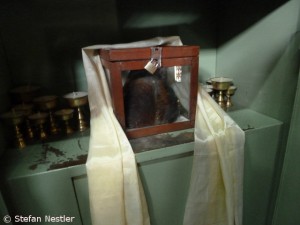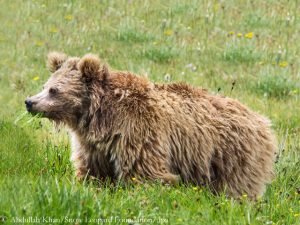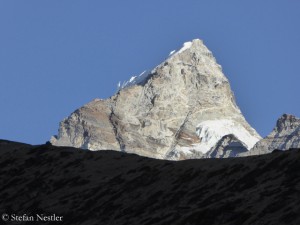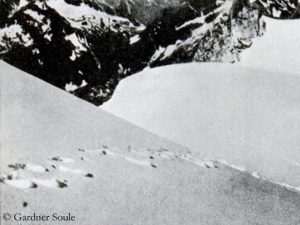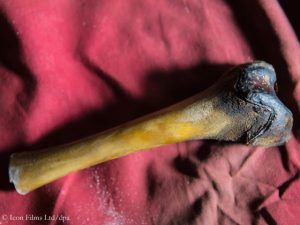The yeti is dead, long live the yeti!
As a child, everyone has probably experienced this phase. Actually, you know that Santa Claus does not exist and that it’s your parents who put the presents under the tree. And yet you are repressing this fact – simply because Santa is part of the party. Something like that happens to me with the yeti. Actually, I do not believe that this huge mountain monster on two legs really exists, however, for me, the myth and the countless legends about the abominable snowman are simply part of the Himalayas. Therefore, I find it – quite frankly – rather silly that American scientists from the University of Buffalo now stand up and say: The yeti is actually a bear.
Bear hair and dog tooth
They studied 24 samples that had been attributed to yetis and stored in various monasteries and museums or collected on trips to Pakistan – including bones, hair and faeces – and compared them to the DNA of known species. The result: Almost all of them could be assigned to bears: Himalayan brown bear, Tibetan brown bear, Continental Eurasian brown bear and Asian black bear. Only one alleged yeti tooth from one of the Messner Mountain Museums turned out to be from a dog. Reinhold Messner feels confirmed – not because of the dog tooth, but because of the bear remains. After all, he himself had written a yeti book (and earned good money) almost 20 years ago, exposing the mountain monster as a brown bear.
Three dead yaks
Whether in Tibet, Nepal or Bhutan, throughout the Himalayas, stories about yetis, attacking yak herds and shepherds or even abducting people, have been handed down for centuries. Allegedly there was an incident in the Everest region even in 1974: Lhakpa Doma Sherpa claimed she had been attacked by a five feet tall (or rather small) yeti when she had been guarding her yak herd in the Gokyo Valley. The yeti had pulled out her braids and torn her dress, said the then 19-year-old Sherpani. Just because she had played possum, she had survived, Lhakpa said, adding that the yeti had killed three yaks.
Laughing with erect neck hair
The incident is even noted on my 2000 National Geographic trekking map, which I still used last year while hiking through the Gokyo Valley. When we passed the alleged or real site of the yeti attack near the 4470-meter-high village of Machhermo, I alerted my son and our guide about the possible danger. We laughed – and yet there was just that little bit of uncertainty that could briefly make the hair on your neck stand on end: Did it happen that way after all?
The Yeti is alive!
If you read carefully, even the US scientists are keeping a little back door open when they conclude their study as “strongly suggesting that the biological basis of the yeti legend is local brown and black bears.” The shadow of a doubt remains. Maybe people just offered bear hair or bones as yeti relics because the real abominable snowmen were too strong and smart to wangle them out of it. The Yeti is alive – like Santa!



